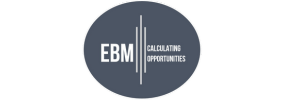
Several statistical analysis techniques are used to identify the risk areas of a company. Much of this financial risk stemmed from a $6.6 billion leveraged buyout (LBO) of Toys R Us in 2005 by investment firms Bain Capital, KKR & Co., and Vornado Realty Trust. The purchase took the company private and left it with $5.3 billion in debt secured by its assets.
- The fluctuation in currency markets can have effects on both the imports and exports of an international firm.
- When investing in equity, investors invest on the basis that higher risk is only advantageous if it is accompanied by potentially higher returns.
- Changes in the market interest rate can push individual securities into being unprofitable for investors, forcing them into lower-paying debt securities or facing negative returns.
- She holds a Bachelor of Science in Finance degree from Bridgewater State University and helps develop content strategies.
- Financial risk is, therefore, an example of unsystematic risk because it’s specific to each company.
- This is because it takes fewer dollars to buy a euro and vice versa, meaning the U.S. wants to buy goods and the EU is willing to sell them; it is too expensive for the EU to import from U.S. at this time.
- A significant portion of high risk/ high return investments come from emerging markets that are perceived as volatile.
Market risk
Recent papers treat the factor distribution as unknown random variable and measuring risk of model misspecification. Jokhadze and Schmidt (2018) propose practical model risk measurement framework.11 They introduce superposed risk measures that incorporate model risk and enables consistent market and model risk management. Further, they provide axioms of model risk measures and define several practical examples of superposed model risk measures in the context of financial risk management and contingent claim pricing. Currency risk is the risk that foreign exchange rates or https://new.olala39.ru/blog/make-accounting-part-of-your-business-s-routine/ the implied volatility will change, which affects, for example, the value of an asset held in that currency. The fluctuation in currency markets can have effects on both the imports and exports of an international firm. For example, if the euro depreciates against the dollar, the U.S. exporters take a loss while the U.S. importers gain.
- Thus operational risk management (ORM) is a specialized discipline within risk management.
- Financial risk impacts every company, but it depends heavily on the operations and capital structure of an organization.
- The returns from different assets are highly unlikely to be perfectly correlated and the correlation may sometimes be negative.
- The purchase took the company private and left it with $5.3 billion in debt secured by its assets.
- Professional money managers, traders, individual investors, and corporate investment officers use hedging techniques to reduce their exposure to various risks.
- Equity risk is the risk that stock prices in general (not related to a particular company or industry) or the implied volatility will change.
Governments and Risk

Financial risk measurement, pricing of financial financial risk instruments, and portfolio selection are all based on statistical models. Model risk quantifies the consequences of using the wrong models in risk measurement, pricing, or portfolio selection. Professional money managers, traders, individual investors, and corporate investment officers use hedging techniques to reduce their exposure to various risks.

How Do Investors Identify Financial Risks?
However, history shows that even over substantial periods of time there is a wide range of returns that an index fund may experience; so an index fund by itself is not “fully diversified”. Greater diversification can be obtained by diversifying across asset classes; for instance a portfolio of many bonds and many equities can be constructed in order to further narrow the dispersion of possible portfolio outcomes. Thus operational risk management (ORM) is petty cash a specialized discipline within risk management. It constitutes the continuous-process of risk assessment, decision making, and implementation of risk controls, resulting in the acceptance, mitigation, or avoidance of the various operational risks. Many circumstances can impact the financial market and impact the monetary well-being of the entire marketplace when a critical sector of the market struggles, as was demonstrated during the 2007–2008 global financial crisis. It reflects the confidence of the stakeholders that market returns match the actual valuation of individual assets and the marketplace as a whole.

- For example, if the euro depreciates against the dollar, the U.S. exporters take a loss while the U.S. importers gain.
- Identifying financial risks involves considering the risk factors that a company faces.
- This is an opportunity cost for the bank and a reason why the bank could be affected financially.
- The Forward ContractThe forward contract is a non-standard contract to buy or sell an underlying asset between two independent parties at an agreed price and date.
- It reflects the confidence of the stakeholders that market returns match the actual valuation of individual assets and the marketplace as a whole.
- Individuals face financial risk when they make decisions that jeopardize their incomes or ability to pay their debt.
- Currency risk is the risk that foreign exchange rates or the implied volatility will change, which affects, for example, the value of an asset held in that currency.
This is because it takes fewer dollars to buy a euro and vice versa, meaning the U.S. wants to buy goods and the EU is willing to sell them; it is too expensive for the EU to import from U.S. at this time. Interest rate risk is the risk that interest rates or the implied volatility will change. If a bank gives out a 30-year mortgage at a rate of 4% and the interest rate rises to 6%, the bank loses and the consumer wins.










